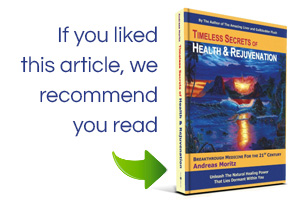By: Helmut Beierbeck
Source: NaturalNews.com
Fatty liver disease used to be associated with alcoholism, but it is no longer restricted to heavy drinkers. Our calorie-rich but nutrient-poor diet has led to an epidemic of nonalcoholic fatty liver disease (NAFLD) that tracks our rising obesity and diabetes rates. Autopsies and ultrasound studies have shown that up to 75% of the obese and 70-85% of type 2 diabetics have fatty livers. And the low-profile but essential nutrient choline appears to provide the solution to the problem.
What is NAFLD?
NAFLD develops in two stages. In the first stage fat accumulates in the liver. This fat can come from several sources: free fatty acids released into the blood by fat tissue, lipogenesis in the liver from carbohydrates (especially fructose from HFCS or table sugar), and dietary fats carried to the liver by chylomicron remnants. Fatty liver disease is a silent epidemic because its first stage, fat accumulation, generally doesn’t produce overt symptoms.
Unfortunately, the accumulated fat can be damaged by reactive oxygen species, especially if there is a lack of fat-soluble antioxidants and an excess of polyunsaturated fatty acids vulnerable to lipid peroxidation. Oxidative stress leads to the second stage, an inflammatory response that is made worse by our dietary omega-6 / omega-3 imbalance. The end result of the second stage is scarring and potential liver failure or cancer.
The role of choline in NAFLD
A healthy liver prevents the accumulation of fat and its associated complications by packaging excess triglycerides in very low density lipoproteins (VLDLs) and releasing them into the blood stream. Making VLDL particles requires phosphatidylcholine (lecithin), a choline-containing phospholipid. A shortage of choline prevents the liver from making VLDLs and delivering its fat stores to the appropriate tissues.
Phosphatidylcholine can be made from the precursor phosphatidylethanolamine; choline is simply ethanolamine with three methyl groups at the nitrogen atom. But ethanolamine has to come from the diet as well, and its conversion to choline additionally requires the amino acid methionine, a methyl group donor. For this reason increasing methionine consumption also improves fatty liver disease.
Organic liver, eggs and wheat germ would be the best dietary sources of choline. But liver does not play a significant role in the North American diet, and egg consumption has decreased because of our cholesterol phobia. Not surprisingly then, nutrition surveys show that most Americans consume far less choline than the recommended Adequate Intakes, 425 mg/day for women and 550 mg/day for men.
Choline doesn’t just help prevent NAFLD; it is also needed for neurotransmitter synthesis, cell membrane signaling and methyl group metabolism. Choline deficiency is therefore a major health hazard. We need to increase consumption of this important nutrient, but judging by the obesity and diabetes trends, society isn’t getting any closer to a healthy diet. Supplementation with lecithin is an effective and affordable way to get enough choline.
To view the original article click here.
To reprint this article, visit the source website for reprinting guidelines


